Himalayan Salt Vs Sea Salt: Which One Should You Choose
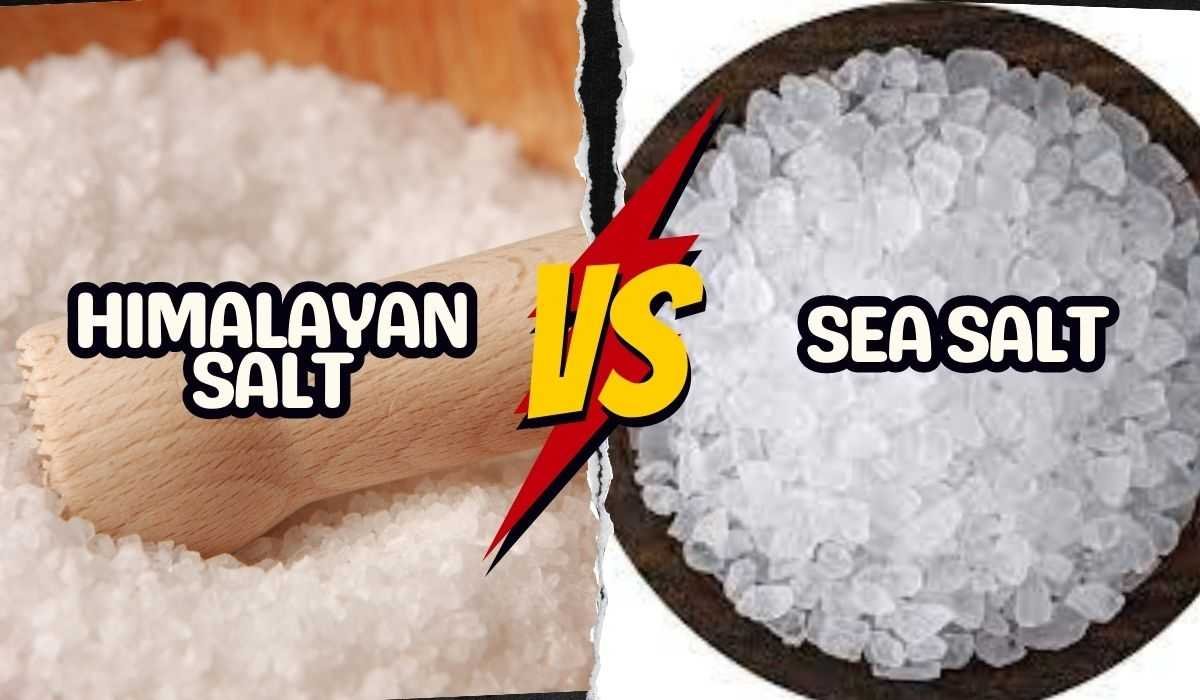
Are you feeling a little bit salty?
Himalayan salt and sea salt are two popular forms of salt that have been around for centuries. There’s nothing like the good old days when our ancestors used to harvest these natural salts from their respective regions.
So, which one is better? Well, it all depends on what you’re looking for!
In this article we’ll take a look at the origin and history, nutritional value, physical characteristics, harvesting techniques, benefits and uses, storage, price comparison and regional varieties of both Himalayan salt and sea salt so that you can make an informed decision about which one is best for your needs.
Himalayan Salt Vs Sea Salt Comparison Table
Here’s a detailed comparison table between Himalayan Salt and Sea Salt, covering various aspects:
| Aspect | Himalayan Salt | Sea Salt |
|---|---|---|
| Origin and Sourcing | Mined from the Khewra Salt Mine in the Punjab region of Pakistan. | Harvested from evaporated seawater, typically from various coastal regions around the world. |
| Color | Pink to reddish-brown due to iron oxide and other trace minerals present. | Varies depending on the impurities present and the specific region of harvest, ranging from white to gray or pink. |
| Composition | Contains a variety of minerals including sodium, potassium, calcium, magnesium, iron, zinc, copper, manganese, iodine, etc. | Contains essential minerals such as sodium, potassium, calcium, magnesium, iron, zinc, copper, manganese, iodine, etc. |
| Trace Minerals | Contains trace minerals like selenium, chromium, molybdenum, silica, etc. | Contains trace minerals like selenium, chromium, molybdenum, silica, etc. |
| Flavor and Taste | Mild, subtle, and less salty taste with a slight mineral undertone. | Taste varies based on the specific sea salt and its harvesting region, ranging from delicate to briny flavors. |
| Texture | Typically coarser with larger crystal sizes. | Texture can range from fine to coarse, depending on the specific sea salt and its processing. |
| Culinary Uses | Widely used as a finishing salt, in cooking, and as a decorative element. | Popular as a versatile seasoning salt in various culinary applications. |
| Source of Minerals | Derived from ancient sea salt deposits that have been crystallized over millions of years. | Derived from evaporated seawater, containing minerals present in the ocean. |
| Processing Methods | Mined and undergoes minimal processing, often hand-extracted and stone-ground into different forms. | Harvested seawater is evaporated, leaving behind salt crystals that are typically washed, dried, and minimally processed. |
| Environmental Impact | Concerns over long-distance transportation and carbon footprint due to mining and exporting. | Concerns over sustainable sourcing and potential pollution from the sea during harvest. |
| Availability | Widely available in various forms (crystals, fine grind, blocks) in most markets and online. | Available in different forms (fine, coarse, flakes) in supermarkets, specialty stores, and online. |
| Cost | Generally higher compared to regular table salt due to mining and transportation costs. | Can vary depending on the brand, source, and processing methods, with some varieties being more expensive. |
| Cultural Significance | Associated with traditional medicine and wellness practices, particularly in the Himalayan region. | Used in various culinary traditions around the world, often associated with coastal and maritime cultures. |
Origin and History
Alright, let’s dive into the world of salts!
So, Himalayan salt, yep, it’s that cool pinkish salt you’ve probably seen around.
It comes from the Khewra Salt Mine in Pakistan, located near the mighty Himalayan mountains. This mine is one of the oldest and biggest in the world.
So, how did it all start? Well, millions of years ago, ancient seas dried up, leaving behind these mineral-rich salt deposits that eventually formed into what we now know as Himalayan salt.
And what makes it pink? Well, it’s all thanks to a bit of iron oxide, also known as rust, that gives it that pretty hue.
Now, sea salt! You got it, it’s derived from the sea.
But, hold on, there’s not just one type of sea salt. No siree! It’s like a big salty family with all sorts of flavors and textures.
The thing is, sea salt is made by evaporating seawater, and the process varies depending on where it’s made.
There’s no specific sea salt, it’s just a general term for salt that comes from the sea. The cool thing is, it’s been around for ages, like way back in ancient times, people were already using sea salt to add flavor to their food and preserve stuff.
It’s like the OG of salts!
Now, both Himalayan salt and sea salt have their own unique charm. Himalayan salt rocks that mild, almost sweet taste with a hint of earthiness. It’s not as strong as some other salts, which makes it a great choice for folks who prefer a more delicate flavor. And let’s not forget that pretty pink color that looks fancy on your kitchen table.
On the other hand, sea salt, with all its salty goodness, brings that briny, mineral-rich flavor to the party. Some types, like the famous Celtic salt or sel gris, even have that coarse and crunchy texture that adds a fun twist to your dishes. Plus, it’s got all those trace minerals that come from the sea, like magnesium, calcium, and more.
Nutritional Value
Now let’s talk about the salty stuff and see what they bring to the nutritional table!
First up, iodine content.
Now, here’s the deal: when it comes to iodine, sea salt takes the lead.
You see, iodine is a crucial mineral that our bodies need for a healthy thyroid, and sea salt has it naturally in its salty package.
On the other hand, Himalayan salt, while rich in other minerals, doesn’t really pack a punch in the iodine department.
So, if you want to keep that thyroid happy, sea salt might be the way to go.
Next, let’s talk electrolytes!
These little guys are essential for our bodies to do their thing, like keeping the right fluid balance and making our muscles do their dance.
Both Himalayan salt and sea salt are rocking the electrolytes game, but there’s a difference.
Himalayan salt brings sodium and potassium to the table, which are two key players in the electrolyte squad.
Sodium helps with fluid balance and nerve impulses, while potassium is like the muscle whisperer, making sure they contract and relax like champs.
On the sea salt side, you get a similar deal, but with a twist. It’s got sodium, just like Himalayan salt, but it also packs a bigger punch of magnesium.
Magnesium is like the chill pill for our muscles and nerves, helping them relax and keeping cramps at bay.
So, sea salt might have a little extra something-something in the electrolyte department.
Dr. Berg’s Electrolyte Powder Formula
Dr. Berg’s Electrolyte Powder replenishes electrolytes and relieves muscular cramps. Dissolves easily and is ideal for promoting endurance, hydration, normal muscle function and energy. It’s also keto-friendly! Each dose includes 1000mg of potassium and absolutely no sugar, carbs, maltodextrin, or artificial additives.
Last but not least, trace minerals!
This is where Himalayan salt shines like a salty superstar. It’s got a colorful mix of trace minerals like calcium, magnesium, and even a touch of iron that gives it that pretty pink hue.
These trace minerals are like a bonus pack for our bodies, supporting various processes and keeping things in balance.
Sea salt also brings some trace minerals to the party, but it’s not as rich as Himalayan salt in this department.
When it comes to nutritional value, it’s a bit of a trade-off. If you need that iodine boost, sea salt has your back.
But if you want a colorful mix of trace minerals, Himalayan salt is the way to go. And hey, let’s not forget, whether you choose one or the other, they’re both better than highly processed table salt with all its added stuff.
Physical Characteristics
You can think of Himalayan salt as a fine grain of sand, while sea salt is a course grain of rock. Both are composed primarily of sodium chloride, which provides the primary flavor in cooking.
Himalayan salt has higher levels of trace minerals that impart different colors and flavors. Its color ranges from pink to off-white, while sea salt is usually grey or white. Himalayan salt also has a more complex flavor than traditional table salts due to its mineral content.
Sea salt tends to have a very strong salty taste compared to Himalayan salt, which has more nuanced flavor notes.
When it comes to texture, Himalayan salt is much smoother than traditional table and sea salts because its small grains break down easier in the mouth when eating or cooking with it. This makes it perfect for finishing dishes and salads where extra crunch is desired. On the other hand, sea salt’s coarser texture is better suited for use during cooking rather than at the end as an added garnish since it won’t dissolve as easily on food.
The two types of salts are also used differently when baking or cooking with them since their shapes differ significantly; Himalayan’s fine grains dissolve quickly into liquids while large crystals from sea salts take longer to dissolve fully due to their size and shape difference.
When substituting one type for another in recipes make sure you adjust measurements accordingly since they don’t have identical weights per volume measurement either – one cup of Himalayan contains less sodium chloride than one cup of regular table or sea salts so you may need more if using table/sea salts instead!
Harvesting Techniques
Harvesting techniques for Himalayan salt vary from those used to harvest sea salt, as the two salts have different properties. The harvesting of Himalayan pink salt can be broken down into four distinct steps:
- Mining: Miners travel up to 200 meters underground and use picks and hammers to break up the solid blocks of salt found in the mines.
- Transporting: The mined pieces are then transported out of the mine via wheelbarrows or wooden carts pulled by manual labor or mules.
- Crushing: The large chunks are then taken above ground and crushed into a smaller, uniform size suitable for consumption.
- Processing: Lastly, any impurities are filtered out before packaging and shipping to customers around the world.
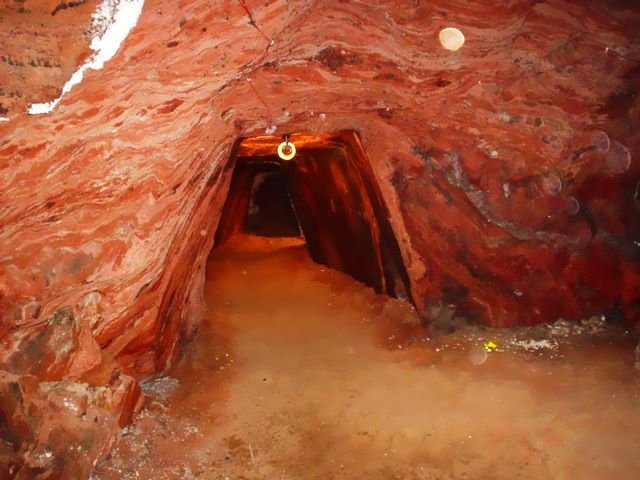
The harvesting process for sea salt is slightly different as it involves no mining but instead relies on evaporation techniques using seawater collected from oceans, seas, and other bodies of water with high salinity levels.
After collecting this seawater in shallow pools made from clay or concrete, natural processes like wind and sun help evaporate most of the water until only crystalized salt remains.
This salt is then harvested manually or through machines depending on its intended use.
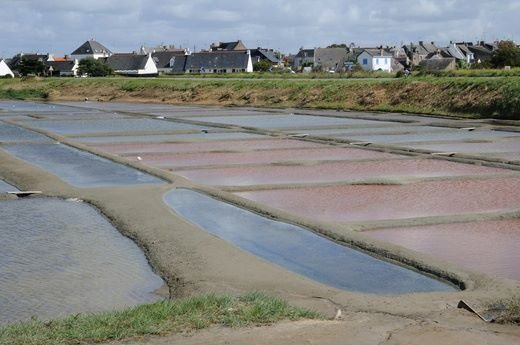
Whether Himalayan or sea salt, both require unique harvesting techniques that allow them to be enjoyed by millions around the world!
Benefits and Uses
Let’s explore the uses and advantages of each type further.
Skin
When it comes to skin health, Himalayan salt is often preferred over sea salt since its minerals provide more nourishment.
Both salts can be used as exfoliants to remove dead skin cells, but the fine grain of Himalayan salt makes it gentler and less abrasive. Its antioxidants also help protect skin from damage and environmental stressors.
Here are three ways that Himalayan salt can benefit your skin:
- Detoxification: Soaking in a warm bath with Himalayan salt helps draw toxins out of the body while restoring essential minerals.
- Improved circulation: Applying a paste or scrub made with Himalayan salt increases blood flow by stimulating nerve endings in the skin’s surface layers, which helps reduce inflammation and improve overall tone and texture.
- Skin hydration: The magnesium content in Himalayan salt helps prevent moisture loss from the surface of your skin, leaving it feeling softer and smoother for longer periods of time.
Himalayan Salt has powerful healing properties that make it an excellent choice for improving the quality of your skin’s appearance, making it healthier and more vibrant looking overall.
Acne
Acne can be an annoying and embarrassing problem, but luckily, Himalayan salt is a natural remedy that can help!
Salt has long been used as a folk remedy for skin problems. Himalayan salt specifically contains many minerals, such as sodium chloride, potassium, and calcium chloride, which are beneficial for the skin.
Additionally, these minerals have anti-inflammatory properties that can help reduce swelling and redness associated with acne. In order to use this natural remedy, you should mix two tablespoons of Himalayan salt with one cup of warm water.
Gently apply the mixture to your face using a cotton ball or pad. Leave it on for 5-10 minutes before washing off with cold water.
You may also add essential oils like tea tree oil or lavender oil to the solution in order to further reduce inflammation and bacteria associated with acne breakouts.
Regular use of this simple remedy can help reduce inflammation and flare-ups caused by acne over time.
Arthritis
You may have heard that both Himalayan and sea salt can help reduce acne, but did you know they can also benefit those suffering from arthritis?
In a study, thirty patients with rheumatoid arthritis were divided into two groups and treated with bath salts once a day for two weeks.
Group I received Dead Sea bath salts, while Group II received sodium chloride (NaCl) as the control group.
The study was double-blind and evaluated clinical and laboratory parameters. Group I showed significant improvement in most clinical parameters, such as morning stiffness, walk time, hand-grip strength, and joint activity.
The therapeutic effect was most prominent at the end of the treatment and lasted up to one month. Group II did not show the same level of improvement.
Himalayan salt vs Sea salt for piercings
Though Himalayan salt has its benefits, when it comes to piercings, sea salt is king – ‘an ounce of prevention is worth a pound of cure’.
Cleaning a navel piercing properly is essential for reducing the risk of infection. Sea salt is an ideal cleaner because it contains iodine, which helps fight bacteria and other germs.
It’s also important to note that Himalayan salt doesn’t contain any iodine, so if you use it for cleaning your piercing, you won’t get the same level of protection as with sea salt.
Using iodine for cleaning can also be risky since too much can cause irritation or even damage to the skin. For this reason, it’s best to stick with using sea salt when cleaning your navel piercing.
Following proper aftercare instructions will help reduce the risk of infection and ensure that your piercing heals correctly and looks great! Here’s a 2 minute video showing how to prepare sea salt soak for your new piercing.
Gastronomical Applications
You may be familiar with the use of Himalayan salt and sea salt in piercings, but did you know that these two salts can also be used for gastronomical applications?
For stake, Himalayan salt provides a unique flavor to grilled meat and vegetables that can’t be achieved with other seasonings. It’s also great for cooking as it adds flavor to soups, stews, marinades, and sauces.
Finally, it makes an excellent ingredient for baking because its large flakes help to create texture in baked goods like muffins, cookies, and cakes.
For Stake
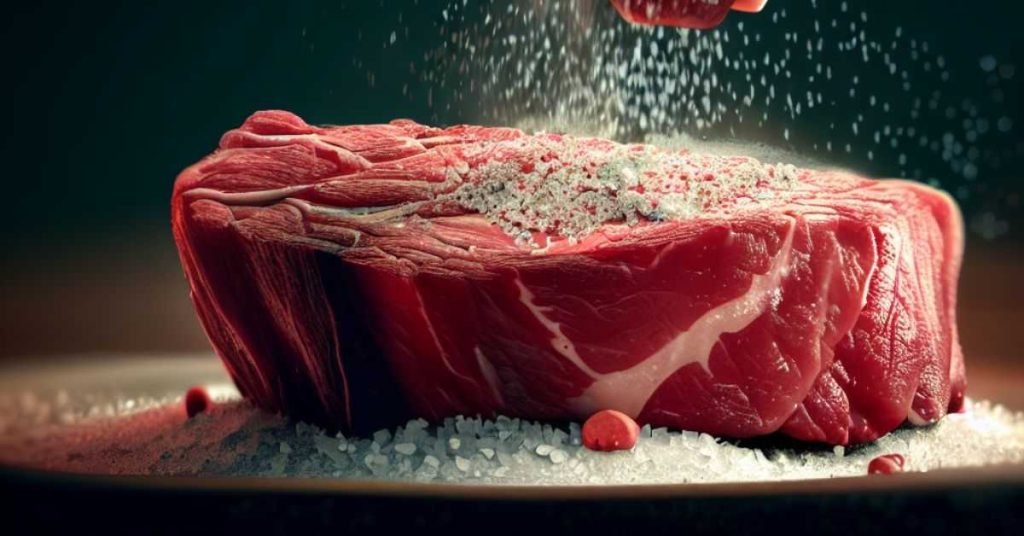
Making a decision between Himalayan salt and sea salt can be difficult, but understanding the benefits of each will help you make an informed choice.
When it comes to steak, both salts offer unique opportunities for flavor and texture. Himalayan salt has a softer, milder flavor and is slightly more dense than sea salt. Sea salt, on the other hand, offers a stronger flavor profile with crunchy grains that provide texture.
Both types of salts are rich in minerals that bring out the natural flavors of steak. Additionally, Himalayan salt can also be used to create a flavorful crust on steaks when grilled or roasted.
Knowing which type of salt works best for your steak dish will ensure you get the most out of your meal every time!
For Cooking
When it comes to cooking, both Himalayan and sea salt offer unique flavor profiles that can take your dishes to the next level.
Himalayan salt is mined from an ancient ocean deep inside the Himalayas, which gives it a rich pink color and iron content. It also contains 84 trace minerals, making it a great source of nutrients for cooking.
Sea salt, on the other hand, is harvested from evaporated seawater and has a milder taste compared to Himalayan salt due to its lower mineral content. Both salts are popular options for seasoning food, but they have their own distinct flavor profiles. Therefore, it is recommended to experiment with both salts to find what works best for your dishes.
In general, Himalayan salt has a stronger flavor and is often used as a finishing or garnish salt. On the other hand, sea salt is ideal for cooking since it is not too salty or overpowering in flavor.
In Baking
In baking, Himalayan salt’s bold flavor and iron content can provide a salty crunch to recipes. Meanwhile, sea salt’s milder taste is great for balancing out sweeter ingredients. Both salts are popular choices in the kitchen but have different features that make them ideal for certain dishes.
Himalayan salt has larger crystals than sea salt and holds its shape better when cooked, giving it a crunchier texture. Sea salt is made through evaporating ocean water, so it contains trace minerals like magnesium and calcium which can add flavor.
When it comes to baking, Himalayan salt may be best suited for savory dishes like breads or crackers while sea salt works well as an all-purpose ingredient for cookies, cakes, and other desserts.
Storage
Store both himalayan and sea salt in airtight containers to keep them fresh! This is especially important for himalayan salt, as it tends to absorb moisture from the atmosphere more easily.
It’s also worth noting that unrefined Himalayan salt contains trace minerals and elements, so storing it in an airtight container can help prevent those from being lost due to oxidation or other environmental factors.
When it comes to sea salt, storage is still important – however, there are a few additional considerations.
For instance, if you’re using coarsely ground sea salt, you’ll want to store it in a container with small openings (such as a shaker) so that the crystals don’t clump together over time.
Additionally, some brands of sea salts may contain anti-caking agents which can give them a longer shelf life – if this is the case with your specific brand of sea salt then be sure to check the packaging for any special storage instructions.
Overall, proper storage of both himalayan and sea salts will ensure they both remain fresh and flavorful for much longer than if not properly stored.
For best results when storing either type of salt, make sure you use an airtight container at room temperature in order to ensure maximum freshness and longevity.
Price Comparison
Comparing prices of Himalayan and sea salt can help you determine which one offers the best value for your money. Himalayan salt is slightly more expensive than sea salt due to its limited supply, geographic location, and production costs.
Given these factors, it’s easy to see why Himalayan pink salt often commands a higher price tag than other types of edible salts.
However, if you’re looking for an affordable option with plenty of flavor and health benefits, then traditional sea salts may be the better choice for you.
Regional Varieties
Discovering the unique regional varieties of salt can help you find the perfect blend of flavor and health benefits to satisfy your palate.
Let’s dive into the salty world of regional sea salts!
Now let’s dive into the world of Himalyan Salts (Yes, you bet there are other varieties of Himalayan salt, and they’re as exciting as the classic pink one).
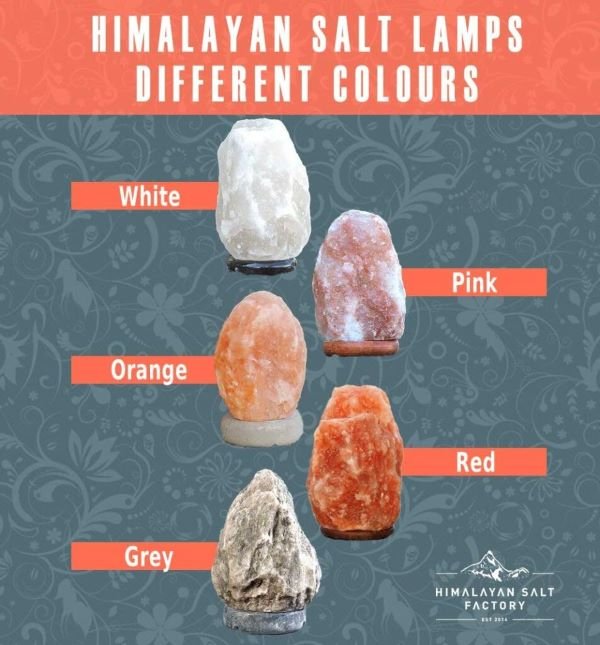
Where to buy
Knowing where to buy each type can help you make an informed decision about which one will work best for your needs.
Here are some recommended and high rated brands for both Himalayan and Sea Salts:
HIMALAYAN SALTS
SEA SALTS
Frequently Asked Questions
Conclusion
In conclusion, both Himalayan salt and sea salt are great for adding flavor to your meals. While Himalayan salt has a higher mineral content, sea salt tends to be more affordable. Plus, you can find regional varieties of both salts with unique colors, textures, and flavors.
When it comes down to the nitty-gritty, choosing between the two is really a matter of personal preference – so pick whichever one strikes your fancy!
But remember: when it comes to seasoning food, a pinch of either type will go a long way – so don’t overdo it!
READ NEXT








